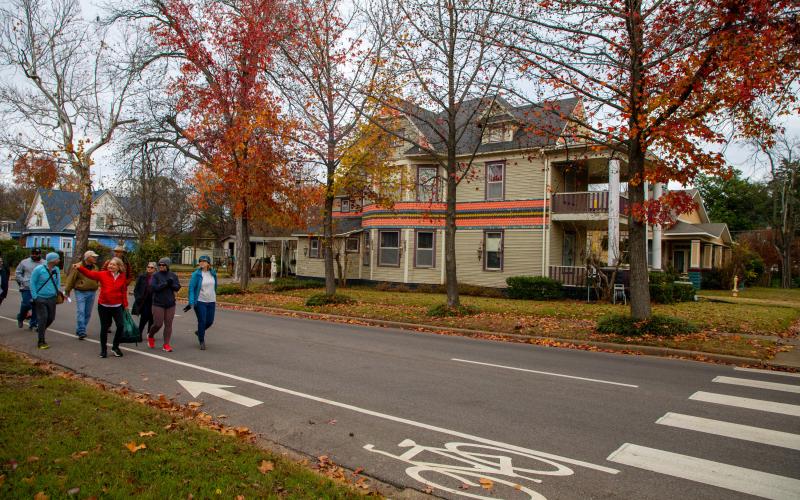Durant City Council in its meeting last week approved a resolution of support for the North Fifth and Sixth avenues bike/pedestrian connectivity project between Southeastern Oklahoma State University and historic downtown Durant.
The request was on behalf of the Durant Sustainability Coalition and this was a follow-up of when community members walked on Fifth Avenue from Southeastern to Opera House Coffee in downtown Durant to look at the street and discuss ways to create safer routes for bicycles and pedestrians.
According to Mark Mesiti-Miller, chair of DSC, other than a small amount of the community development director’s time, there is no cost to the city to pursue this next step. The result will be that an ODOT team will visit, walk the site and advise the city as to whether this project would be eligible to apply for funding.
In a memorandum to the city, Mesiti-Miller said that by authorizing community development director Reed Aichholz to submit a “call for projects form” to ODOT will allow the city to determine if the project is suitable for a Transportation Alternatives Program (TAP) grant application.
This program is now called The Transportation Alternatives (TA) Set-Aside and according to ODOT, it provides funding for a variety of transportation projects that prioritize safety, comfort, and connectivity to destinations for all people who use the street network such as pedestrian and bicycle facilities; construction of turnouts, overlooks, and viewing areas; community improvements such as historic preservation and vegetation management; environmental mitigation related to stormwater and habitat connectivity; recreational trails; safe routes to school projects; and vulnerable road user safety assessments.
Reasons for the resolution in support of the project cited by DSC are: - This project will provide a safe route connecting neighborhoods with an elementary school, a middle school and the Boys & Girls Club. This project will also provide a safe route connecting the historic heart of downtown Durant with the Southeastern Oklahoma State University campus, several neighborhoods and two city parks.
- Should this project qualify for funding, the grant funds can be used to pay for both design and construction costs. The design costs often exceed 10% of the total cost so being able to include them will significantly benefit the project’s affordability. A graphic from page 21 of Durant Master Trails Plan 2017 illustrated the proposed improvements which were identified as short-term priorities. Now, seven years later, is an opportunity to explore an outside funding source to construct these priority improvements.
- This project will fulfill many of the transportation goals expressed in the recently adopted Comprehensive Plan focused on transforming Durant into a more sustainable community. Accordingly, this project will be an important and highly visible demonstration of the city’s commitment to a safer, better future for all, especially children and persons with disabilities.
In an email, Mesiti-Miller said it was great news that the council unanimously voted to take the next step on the project by contacting ODOT and inviting them to the project site to determine if it is suitable for grant funding.
“Hopefully, when ODOT evaluates this project they will deem it worthy of consideration,” Mesiti-Miller said. “Then the hard work can really begin. In the meantime, let’s celebrate the progress.”

